I was glad to see the article in last week’s Owego Pennysaver about the various trails that are open in the county. There are two places that should be included – the trails at the Bement-Billings Farmstead and the Ketchumville State Forest. Ketchumville now has some official trails but there are also some former logging trails that can provide access. Many trails tend to be wet, so wear appropriate footwear.
There is also a section of the Finger Lakes trail that passes through Richford in the Robinson Hollow State Lands. It is accessible from Robinson Hollow Road and Lacey Road (which used to be called Beam Road).
The trails at the Bement-Billings Farmstead are very well developed and include signage for a variety of the trees. Access is at the Farmstead site by crossing the Sycamore Bridge. There are one and one-half miles of trail, which includes a spot along the creek that was the site of an old mill dam.
There are a wide variety of spring flowers that will be blooming soon including a spectacular display of Virginia bluebells, which usually occurs in mid-May. There are often cars parked by the bridge entrance and I have spoken to people that have traveled from Endicott and Vestal as well as many locals.
If you come you may also want to pay a visit to “Asa”, one of New York State’s largest shagbark hickory trees (scientific name: Carya Ovata). It is on the other side of the road near the soccer fields. It was nominated for the Big Tree Registry for New York State in 1984.
The trees for this registry qualify according to a point system: a point for each inch of circumference, a point for each foot of height and a 1/4 point for each foot of crown spread. This system tends to favor trees that grow out in the open and each tree is matched up with another tree of the same species. Trees that are within five points of one another are listed as co-champions. A DEC official must do the measuring.
At the time there was a tree near Afton that was within the five-point metric, but when this official paid a visit to the Afton tree for another measurement, the top had been blown over. This made “Asa” the largest shagbark in New York State.
If a tree stops growing it dies; that’s a fact of life. The growth may not be very obvious, but even the bristlecone pines out in California need to add some new wood every year. Since Asa has no competition and is growing on some of the best soil in Northern Tioga County, it keeps soaking up the carbs.
The measurement for circumference needs to be made at 4 1/2-feet or diameter at breast height (DBH). I took two measurements: one was 173-inches and the other 178-inches. Either way, this gives it a circumference of over 14-feet and a diameter of over 4-feet. The circumference in 1984 was 147-inches. That’s some significant growth in 36 years; not bad for an old guy. If it stays healthy, maybe it will hit 15-feet some day. That would be cause for a celebration.
If this tree were growing in the middle of the forest, it couldn’t afford to get “fat” because it would need to put more energy into height to stay above the trees surrounding it. As far as height is concerned, it probably doesn’t grow more than a few inches every year.
The disadvantage of being out in the open is that it is much more susceptible to wind damage, but since hickory is a such a tough wood it can withstand a lot of stress. The tree has lost crown spread because many limbs are hollow along with a huge cavern in the trunk.
Just think of all the storms that this tree has survived including one that threw part of a roof past it in the 1930’s, Hurricane Hazel in 1954, a wind shear that destroyed a nearby barn (early 1970’s), and the storm that brought down numerous trees in the Villages of both Newark Valley and Candor just last year.
When cutting up the limbs I have often seen the cavities that show evidence of ant colonies. As trees go into decline, their usefulness to the biodiversity and ecology of the forest increases in many ways. The various hollows and decay become havens for myriads of insect life, which in turn becomes a food source for numerous other creatures higher up on the food chain. The bigger the hollows, the bigger the aviary and mammal residents.
Even ducks like to use trees for nesting as long as the ducklings can make it to a water source. I have joked with people that if Asa were closer to the maple grove, it would be a raccoon condominium. Since the trunk is nearly hollow it would be an ideal place for a bear to spend the winter, if it could manage to dig enough around the roots to get inside.
The tree has had quite a bit of notoriety over the years. Rick Marsi wrote about it around 1985 when the tree made it to the Big Tree Registry. Rick spoke with Mrs. Hills, who donated the property to the Newark Valley Historical Society just eight years earlier.
She shared her memories of picking huge amounts of hickory nuts for her mother as a child. She said that 1983 was an especially good crop that yielded several bushels.
One other story that I heard was that as a child (she was born in 1911) the tree had already developed a hollow and that she was able to climb inside. When trees develop cavities of this type, it is not a good prognosis for the tree. Cavities invite critters, pathogens and insects.
Asa has been healthy enough that it has been able to completely seal off the hollow from the outside. That’s evidence of some very resilient DNA, but the crease from this opening can still be seen to this day.
Merlin Lessler wrote an article about the tree, which appeared in the Tioga County Courier (Aug. 20, 2003). He made the claim that the tree went back to the early 1800’s, but not sure how accurate this would be. He shared some stories from Nelson Dillenbeck, who worked on the farm just to the north that was owned by Paul Smith. Nelson remembered picnickers sitting under the tree enjoying the shade and their meals.
The most vivid memory involved a fluttering piece of paper. Paul Smith was renting the land from Myrtie’s mother, Lela Billings, to grow potatoes. This was a year or two before America’s entry into WWII. Nelson was driving a roller, hitched to a pair of “half-broke” ponies. A piece of paper fluttered by the ponies, which spooked them and they started running. The roller broke loose and Nelson began “dirt-skiing” trying to bring the ponies to a halt. This finally happened under the big hickory tree.
“I never look at that tree without remembering my wild ride across the field,” said Nelson. “I’ve plowed the fields that surround it in the spring and picked nuts underneath it in the fall. It’s become a part of me.”
One of our memorial maple trees on the Farmstead side is dedicated to Nelson.
Lessler was able to document another piece of the tree’s history, writing, “That may be when he decided to protect its’ heritage by depositing a seed nut in a niche that escaped the plow’s blade, a little closer to the road. That seed now thrives as a sixty-year-old son, not as tall as the father or as wide, but definitely of the same sturdy stock.”
That would make this tree about 80 years old. This tree has also been another heavy producer of hickory nuts like its forebear, so much so that one of the lower limbs split one year. This is a hazard for any nut or fruit tree that goes overboard during a mast year.
One other story about the tree came from Clark Smith. Hickory tree leaves turn tan or brown in the fall, so they pale in comparison to the maple trees in regards to color. This happened on a Sunday after the first day of Apple Festival. Nearly all the leaves had turned but were still on the tree. That evening there was a heavy frost with a crystal, clear morning. When the sun came up and started to quickly heat up the air, nearly every leaf on the tree came down in the space of a few minutes. According to Clark, “It was like watching it rain.”
Although it has been “dethroned” as the New York champion, it is still a very impressive tree and probably started growing in the mid-1800s. It is named after Asa Bement, the first person to establish the Farmstead. It may have been growing when Asa went to his eternal reward in 1847. We have pictures of the tree as already mature from the Northern Tioga County Fair, which ran from 1880 to 1916. Wow, could this tree tell some stories. It is still producing excellent hickory nuts; not bad for an old guy.
One precaution we have taken to protect the tree is that during Apple Festival we have been cordoning off an area around the drip edge of the branches so that the ground does not get compacted. This would interfere with water seeping into the ground to get to the roots, but it made a convenient place to put the motorcyclists.
The derivation of the word hickory is quite fascinating and is a reflection of the tree’s usefulness. Although most people think of hickory as a source for tool handles and baseball bats, a great way to smoke meat and a great source of heat in your wood stove, hickory nuts are among the most valuable food sources of the forest. A wide variety of animals and birds depend on hickory nuts as a food source having four times the protein of cow’s milk.
Native Americans were very much aware of this. They would pound the nuts and drop them into boiling water from which they would skim the residue from the top and save it as a kind of pasty butter. The Algonquin term for this was “pawcohiccora”. They would use this as a spread or as an ingredient in corn cakes and other dishes. Some tribes used it for ceremonial purposes.
It was such a valuable commodity that in colonial times one quart of this substance could be traded for 19 lbs. of pork. Early settlers turned the word into “pokahickory,” which eventually took its present form and now applies to the tree itself.
Hickory trees and other nut trees play a major role in the field of agro-forestry, which looks for sustainable methods to derive nutrition from our forests. Saving these big trees from destruction can be a major factor in mitigating climate change.
If you get down into the maple grove there are numerous sugar maples (Acer Saccharum) of various ages. The grove was a place where cows sought shelter from a neighboring farm. I keep thinking that I remember cows being there, but I may just be imagining things. When the Society received the property, there was still quite a bit of barbed wire fencing that remained. Myrtie Hills told me that there was a spring that came off the hill that never ran dry, even in a severe drought. The pipe that fed the cistern is still there today.
There are several old maples around the perimeter along with one that dominates the grove. It has a circumference of 13 1/2-feet, a height of over 100-feet, and a crow spread in the 80-foot range. It’s a contender for the largest sugar maple in Tioga County at least. When the Society tapped these trees, Gerry Curkendahl told me that this one tree produced more sap than all the other maple trees put together.
Since Asa is represented by the shagbark near the road, I thought we could name this tree Abigail, after his first wife. Since both maples and hickories are monoecious, meaning the trees can self-pollinate, assigning a gender might raise some objections from a few botanists. I still like personifying particular trees and like to think that Asa and Abigail represent that sturdy, pioneering spirit that was instrumental in developing this part of New York State, and that will help us get through our current health crisis.
Hopefully they will be around for many years yet, enjoying the sunshine, soaking up the carbon and releasing the oxygen we all need to breathe, enjoying our admiration and helping save the planet.

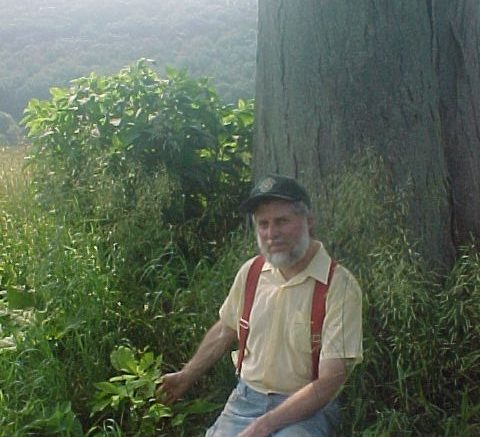
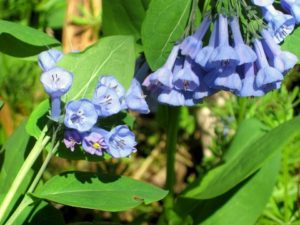
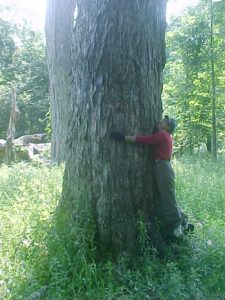
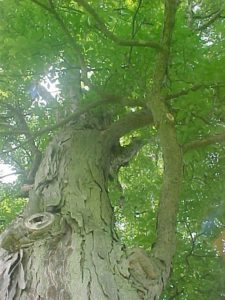
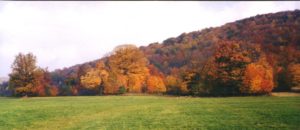
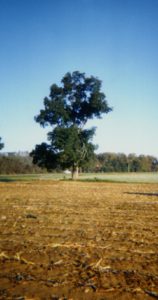
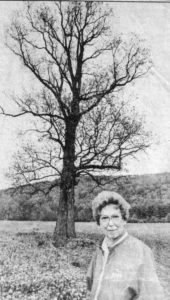
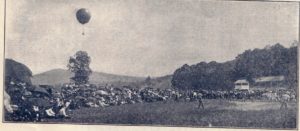

Fabulous and informative article! Your area of your country is just beautiful.
Winnipeg, Manitoba
Canada